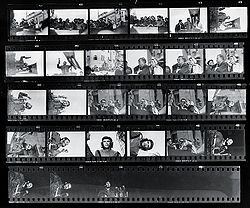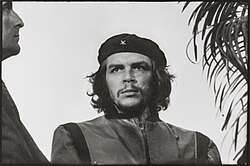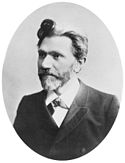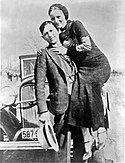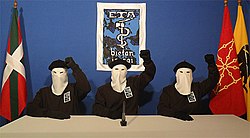CheHigh
This file is in the public domain. The photo was used for the first time internationally in 1967. It is in the public domain by Decree Law no. 156, September 28, 1994, to amend part of Law no. 14 December 28, 1977, Copyright Act (Article 47) which states that the pictures fall into the public domain Worldwide, 25 years after its first use.
Cuba did not sign the Berne Convention until 1997, and this photo was taken and publicized 30 years before that and thus is in the public domain.
- This includes being in the Public Domain in the United States - Since the image was first published in Cuba without compliance of US copyright formalities and used in Cuba before February 20, 1972.
- Of importance yes it is true that Alberto Korda sued that vodka maker Smirnoff based on his "moral rights" (under the belief that Che Guevara wouldn't support alcohol) that are independent of copyright status, while also attempting to obtain copyright ownership of the photograph. Although "moral rights" are not recognized in the U.S. - they are recognized through most of the World and part of international copyright law. Moral rights are included in Berne Convention, so if the photographer is still alive, he still can sue, even if the picture is public domain. However, the moral rights are not transferable, and when Korda died 2001, no one can control the use of the picture anymore under that premise. As to his desire to show he was the rightful owner of the Copyright for the image, that was never decided upon in court as the Case of (Korda v. Lintas & Rex) was settled "sensibly and amicably" out of court.
- As Ariana Hernández-Reguant contends in (Copyrighting Che: Art and Authorship under Cuban Late Socialism Public Culture 2004 v. 16 pp. 1-30.) ~ "There was never any official ruling on whether the depiction constituted a violation of copyright." (pg 4). The author goes on to state that: ~ "Korda took the picture while working for a state-run newspaper, his actual property rights would be questionable under both Cuban and international law." (pg 4)
- Of note as well before the photographer of the photo died, in reference to the image becoming a ubiquitous worldwide symbol, he also stated “As a supporter of the ideals for which Che Guevara died, I am not averse to its reproduction by those who wish to propagate his memory” — Korda [1]
- Moreover, Wikipedia allows for the use of "Images with iconic status or historical importance: As subjects of commentary" as fair-use. (Wikipedia:Non-free content). This image meets that criteria based on the fact that the Maryland Institute College of Art proclaimed this picture "the most famous photograph in the world and a symbol of the 20th century."[2] while The V&A Museum declared it "the most reproduced image in the history of photography."[3] (Note that so long as it is argued that this photograph is in the public domain, this fair-use argument is not relevant to determining its status as such. Neither can the fair-use argument support the decision to host this photograph on Wikimedia Commons, which accepts only freely licensed media.)
- ADDENDUM OF SUPPORTING EVIDENCE:
All quotations come verbatim from ~ A Copyright Revolution: Protecting the Famous Photograph of Che Guevara, by Sarah Levy, 13 Law and Business Review of the Americas, Am. 687. Summer of 2007.
- LEGALLY
- "The Berne Convention, which 160 countries have signed, states in article 7(4) that "it shall be a matter for legislation in the countries of the Union to determine the term of protection of photographic works."
- "The Universal Copyright Convention does not require protection for photographs."
- "In 1994, the World Trade Organization (WTO) implemented the Trade-Related Aspects of Intellectual Property Rights Agreement (TRIPS), which allows the 150 WTO member countries to exclude photographs from the realm of protection provided for intellectual property."
- IN CUBA
- "The first jurisdiction of relevance is Cuban law because Cuba is both the location where the photograph originated and the domicile of the photographer."
- "General copyright protection under Cuban law lasts for photographs retain copyright protection for only ten years from the date the work is first used. After the copyright expires, the Council of Ministers can declare the work as property of the State."
- "It seems that in Cuba the copyright protection in Korda's Guevara photograph would have already expired, and despite the claims of ownership from Korda's heirs, the State would now hold any rights associated with the photograph."
- IN THE U.S.
- "A U.S. district court recently noted that "there is no uniform test to determine the copyright ability of photographs."
- "Under both the 1909 U.S. Copyright Act and the current act, in the absence of a will, courts determine the proper disposition of a copyright interest in accordance with the intestate succession law of the decedent's domicile. This holds true even if the decedent's domicile is in a foreign country. Korda was domiciled in Havana, Cuba."
- IN THE FUTURE
- "Furthermore, the question of ownership is a significant factor in determining not only the transferability of the copyright protection but also the duration of that protection within different jurisdictions. A comparison of the relevant laws of Cuba, the United States, and treaties adhered to by the international community shows a variety of possible results when looking at the protection afforded to the Korda photograph."
- "The heirs of Korda may not find the copyright protection they desire in Cuba, but other countries, including the United States, hold promising atmospheres for future litigation brought by Korda's heirs."
- "It remains to be seen what the result would be in the United States."
- "The outcome of future litigation hinges upon the duration of protection available within a jurisdiction."
Relevante Bilder
Relevante Artikel
Guerrillero HeroicoDas Bild Guerrillero Heroico zeigt den Revolutionär Che Guevara in einer nachdenklichen Pose mit einem Barett auf dem Kopf und wurde vom Maryland Institute of Art als „berühmteste Fotografie der Welt und Symbol des 20. Jahrhunderts“ bezeichnet. Die ursprüngliche Version ist ein Foto von Alberto Korda, das am 5. März 1960 in Havanna (Kuba) mit einer Leica M2 aufgenommen wurde. .. weiterlesen
Mai 1968Dieser Artikel behandelt tagesbezogene Nachrichten und Ereignisse im Mai 1968.Laufende längere Ereignisse Nigeria: Der Biafra-Krieg, Bürgerkrieg von 1967 bis 1970Prag: Nach einem Führungswechsel in der KP im Vorjahr bestehen in der ČSSR einigen Wochen Unklarheit über eine neue Richtung, einen Reformkurs, der tschechoslowakischen Regierungspartei unter Alexander Dubček, der zum „Prager Frühling“ und dessen Niederschlagung durch Truppen des Warschauer Paktes und der Besetzung des Landes führt.Zeitraum im Vietnamkrieg in Südvietnam – die Tet-Offensive gegen die südvietnamesischen und amerikanischen Alliierten dauerte vom 29./30. Januar bis zum 23. September 1968. Sie hatte ihren Höhepunkt bereits im Januar und Februar erreicht. .. weiterlesen
BaskenmützeDie Baskenmütze ist eine traditionell aus Wolle gewalkte, in neuerer Zeit auch aus Gewebe geschneiderte, Kopfbedeckung nach Art des Baretts. Sie stammt wahrscheinlich aus den Pyrenäen, insbesondere dem Béarn, von wo sie sich im benachbarten Baskenland und schließlich weltweit verbreitete. Die Baskenmütze hat wie andere Baretts keinen Schirm und keine Krempe. Ihre Besonderheit ist die flache Form, die nach innen gebogene Kopföffnung und der ca. ein bis zwei Zentimeter lange Zipfel in der Mitte, der beim Filzvorgang entsteht, und auch als Schlinge gearbeitet sein kann. .. weiterlesen





